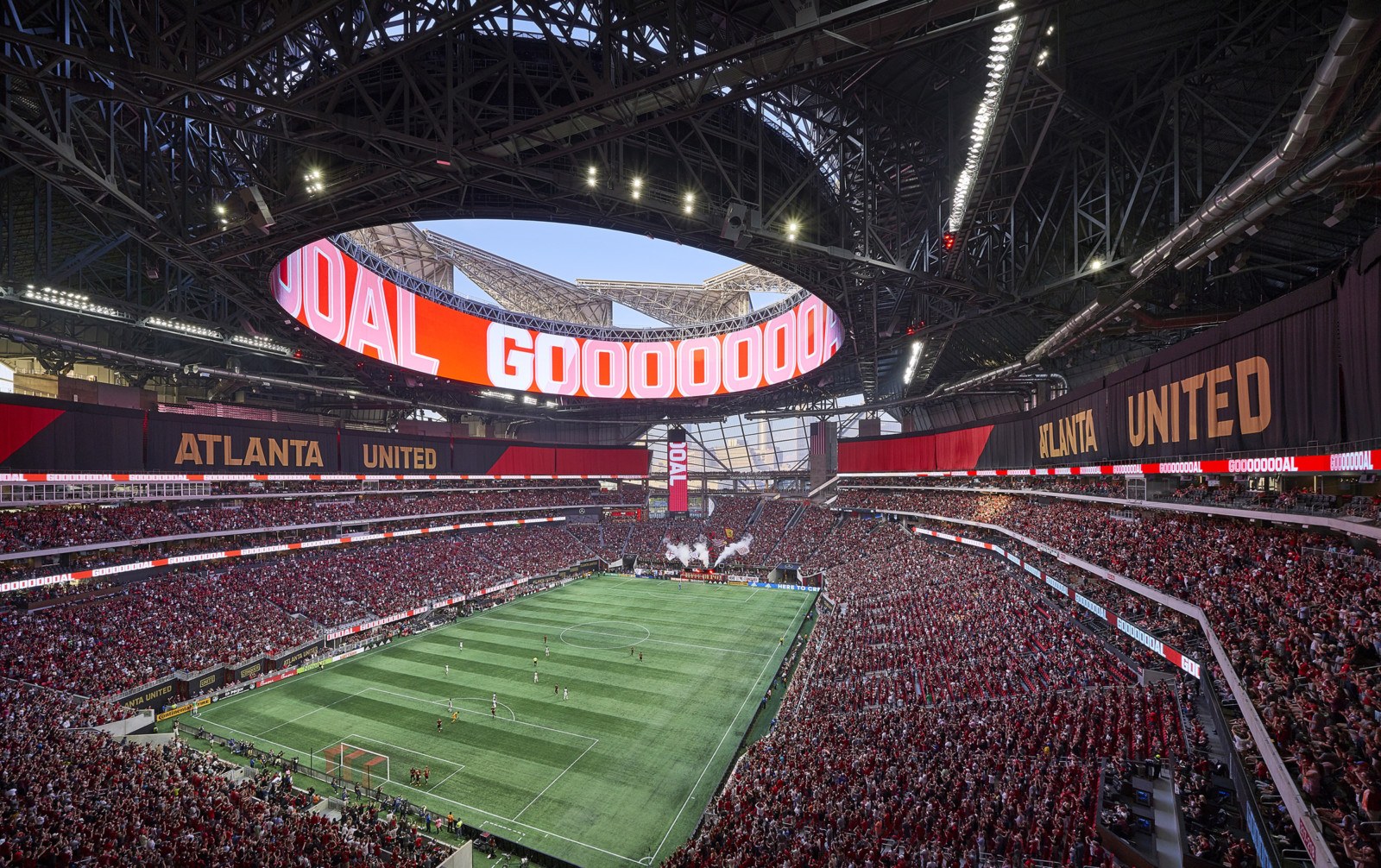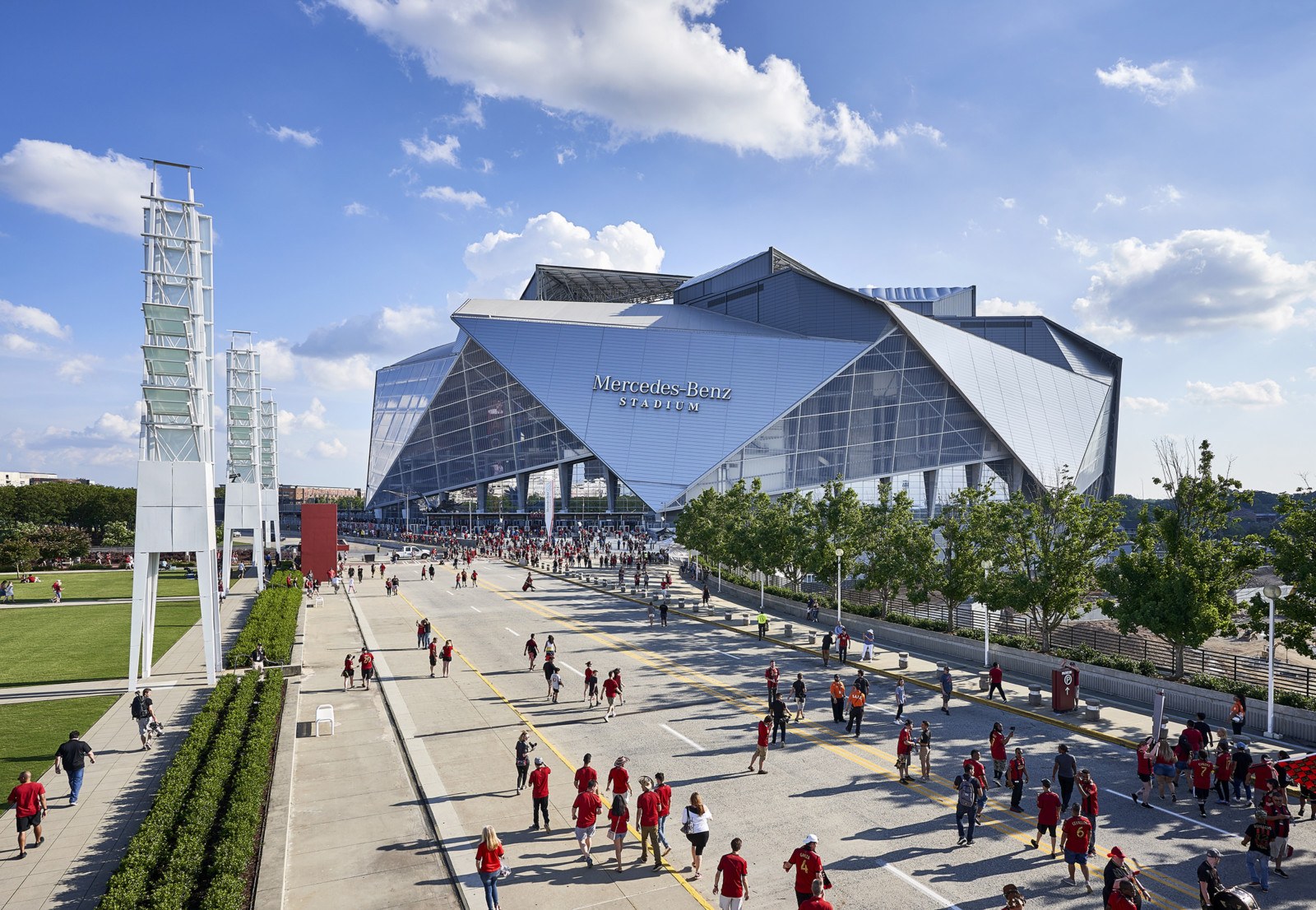Major League Soccer is experiencing record growth—and so are the stadiums that its teams call home.
Bill Johnson, design principal for HOK’s Sports + Recreation + Entertainment practice, spoke with VenuesNow about the influence Mercedes-Benz Stadium has had on the seating capacity conversation in MLS and about the future of soccer stadium design .
Oh Atlanta! The huge success of Major League Soccer’s Atlanta United FC at Mercedes-Benz Stadium culminated in record attendance for the 2018 MLS Cup. More than 73,000 fans packed the stadium Dec. 8 to see #ATLUTD beat the Portland Timbers and win the cup. It was the largest crowd in the league’s 22-year history.
It’s not an anomaly. Atlanta United recorded crowds of 70,000 for some of its bigger matches over its first two years in MLS, and it has caught the attention of U.S. pro soccer teams developing new stadiums in Austin, Cincinnati, Nashville and Sacramento, among other markets. They’re all taking a closer look at whether the typical soccer-specific model of 20,000 seats best fits their markets.
In general, downsizing has been the trend for MLB and NFL facilities, both in new builds and renovations. MLS is the exception. No other league is building more new stadiums, and in a sport where most MLS teams debuted in NFL stadiums in the mid-1990s before moving to soccer-specific venues, could there be a shift back to bigger buildings?
In the early days of MLS, playing matches in an 80,000-seat stadium retrofit that looked empty was discouraging, said Bill Johnson, a design principal with HOK and leader of the firm’s development of Mercedes-Benz Stadium. In Atlanta, HOK designed a building for both the NFL and MLS with a custom half-house setup for soccer that’s more than just a big black curtain hanging from the roof. It blends into the bowl seamlessly for most Atlanta United games, which draw 35,000 to 40,000. For rivals such as Orlando City SC, the upper deck stays open.
“I feel bullish on the whole soccer conversation,” Johnson said. “You’re going to see existing soccer venues start to add seats in some cases. When you start to get up to 30,000 to 40,000 seats and you can block off the upper deck, it feels good. As those lines start to cross somewhere in the middle, it’s going to be more acceptable for soccer to play in NFL venues. If you’re competitive, soccer is going to draw the crowds.”

